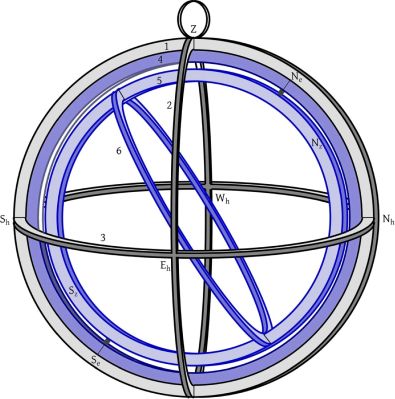During the Middle Ages much of Ancient Greek and Roman scientific, legal and similarly significant texts written on parchment were commonly erased, mostly because of the high cost of new parchment and the little regard given to these secular texts. Although recovery attempts of the remaining faint outlines of the old text has been attempted since at least the 19th century, these often involved aggressive chemical means. Now researchers have managed to recover the text written by Ptolemy on a parchment that suffered such a previous recovery attempt.
The term for a parchment and similar on which the existing text was washed or scraped off is a palimpsest, via Latin from Ancient Greek παλίμψηστος (palímpsēstos, from παλίν + ψαω = ‘again’ + ‘scrape’). In the case of this particular treatise, it is part of L 99 sup which is kept at the Biblioteca Ambrosiana in Milan, Italy. This collection contains fifteen palimpsest parchment leaves previously used for three Greek scientific texts: a text of unknown authorship on mathematical mechanics and catoptrics, known as the Fragmentum Mathematicum Bobiense (three leaves), Ptolemy’s Analemma (six leaves), and a so far unidentified astronomical text on six leaves.

It is this last text that has now been identified, courtesy of work by Victor Gysembergh and colleagues. Whereas 19th century palimpsest recovery attempts by Angelo Mai involved reagents, during the 20th century ultraviolet illumination became the preferred method, followed by similar non-destructive analysis methods. For this study UV fluorescence and multispectral reflectance imaging was employed, which allowed for significant more of the original Greek text to be uncovered. Most notable, this revealed Ptolemy’s treatise on the Meteoroscope, which is an instrument for measuring the position, length, and direction of the apparent path of a shooting star.
This new recovery builds upon text previously recovered by other researchers since Mai’s attempts, and fills in more details, although it must be noted that not all of the text has been recovered. It’s hoped that in future imaging sessions more can be recovered of this irreplaceable text, that like so many of its kind nearly got destroyed during Europe’s darkest era.
(Top image: Ambrosianus L 99 sup., p. 190, ll. 14–23, UV fluorescence image by Lumière Technology. Upside-down Latin overtext in dark brown and Greek undertext in light brown.)











